Table of Contents
Abstract
After distributed photovoltaics are connected to the grid, there are often phenomena such as switch tripping, voltage drop, and penalties due to low power factor. This article analyzes the reasons for these problems, and introduces and comments on the solutions provided by photovoltaic inverter manufacturers. Finally, combined with Enjoypowers’ many years of experience in power quality management, a simple and cost-effective solution is given.
Keywords
photovoltaics, power quality, Enjoypowers
Introduction
The cumulative installed capacity of photovoltaics in the world has accelerated year by year. After the distributed photovoltaics are connected to the grid, while providing renewable energy for the owners, the main circuit switch trips, voltage drops, and even penalties by the power grid company due to reduced power factor, etc. Lower return on investment.
This article analyzes and discusses the impact, causes and common solutions of distributed photovoltaic grid connection on power quality, and provides a simple and cost-effective solution based on Enjoypowers’ years of experience in power quality management.
Influence of distributed photovoltaics on power quality
The working principle of distributed photovoltaic
A distributed photovoltaic system consists of solar panels that generate DC power and a solar inverter that continuously converts DC power to AC power. The inverter is directly connected to the grid.

Common power quality problems of distributed photovoltaic systems
Since a photovoltaic inverter is a power electronic device that converts direct current to alternating current, it can cause some power quality problems such as residual direct current and harmonics. If the PV inverter is not properly integrated into the electrical system, it can also lead to three-phase unbalance or power factor degradation.
Harmonic Problems
Photovoltaic inverters generally use PWM circuits to convert direct current generated by solar panels into controlled alternating currents. This circuit will control the amplitude and frequency of the inverter output to eliminate low-order harmonics, but will generate high-frequency harmonics. Wave.
If the high-frequency harmonics are combined with the harmonics generated by the load, resonance may occur, resulting in an increase in the overall THDi of the electrical system, blown fuses in the capacitor compensation cabinet, and even frequent tripping of the main circuit breaker, which seriously affects The owner’s normal electricity consumption.
Three-phase unbalance problem
A large number of single-phase photovoltaic inverters are not uniformly connected to the three-phase electrical system, which will lead to the problem of three-phase unbalance.
In some scenarios, even if the single-phase photovoltaic inverters are evenly connected between the three phases, due to the unbalanced direction of the photovoltaic panels, or the photovoltaic panels of a certain inverter are shaded by trees, etc. Uneven output power can also cause three-phase unbalance.
As shown in the figure below, if the solar panel connected to L1 on the left is just blocked by clouds, and the output power of the inverter is less than that of L2 and L3, it will cause a three-phase unbalanced power quality problem.

The problem of power factor reduction
Distributed photovoltaic systems have a great impact on the overall power factor of the electrical system. If it is not handled properly, it will not only affect the normal electricity consumption of the owner, but also may face penalties and reduce the return on investment of the photovoltaic system.
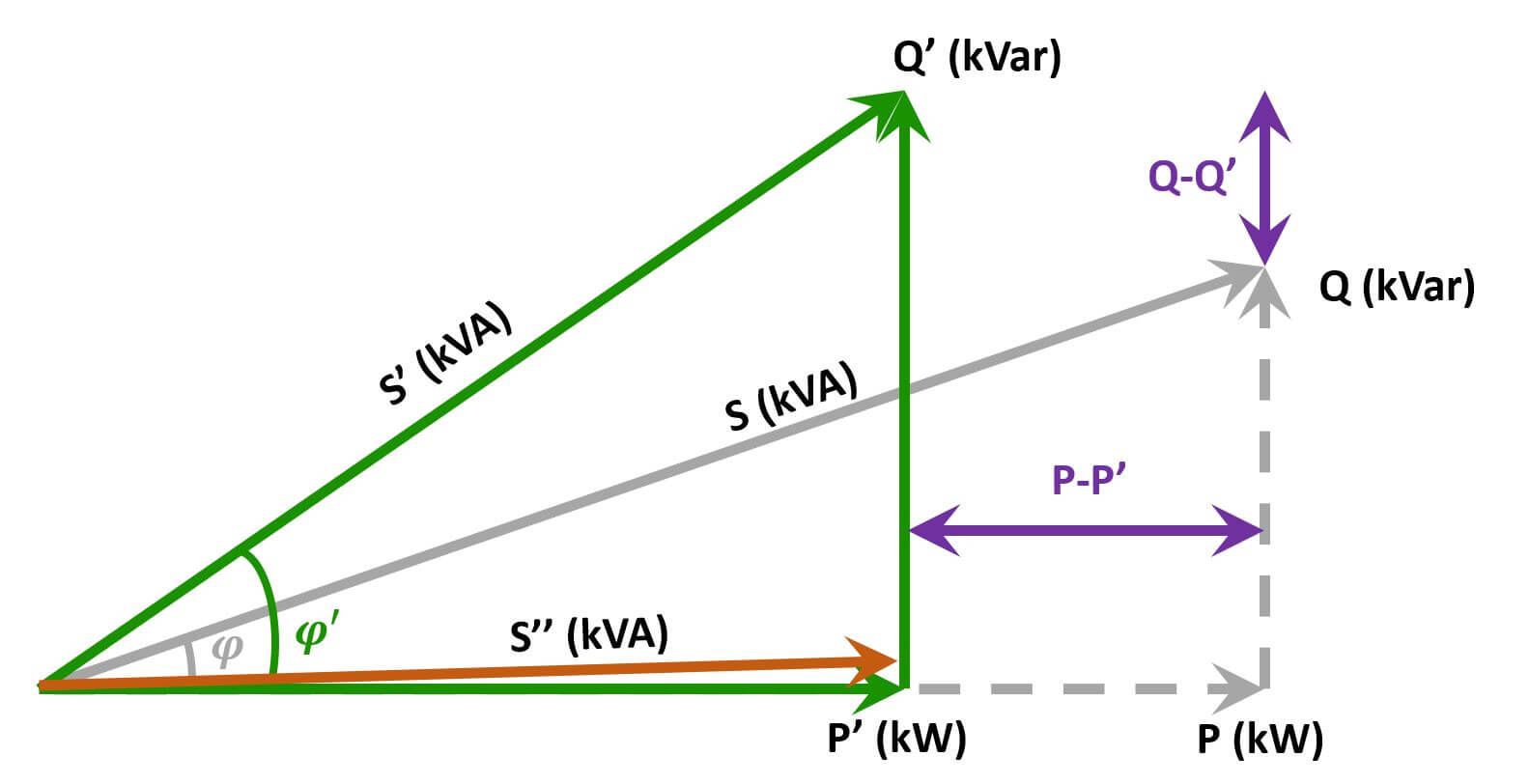
As shown in Figure 3, before the owner installs the distributed photovoltaic system, the active power of the system is P, the reactive power is Q, the apparent power is S, and the system power factor is cosφ . After installing the distributed photovoltaic system:
- The photovoltaic system mainly provides active power (P-P’), which reduces the owner’s active power to P’;
- If the reactive power compensation controller is affected by harmonics, or cannot recognize the reverse current situation normally, the reactive power compensation cabinet cannot be switched correctly, so that the reactive power obtained from the grid increases from Q to Q’;
Under the influence of these comprehensive factors, the power factor is reduced from to cosφ’. The reduction of the power factor will not only weaken the load-carrying capacity of the transformer, but even cause voltage drop and other phenomena, which will affect the normal power consumption of the owner and make the owner face penalties.
The value of solving distributed photovoltaic power quality problems
- Improve power quality, ensure electrical system safety, reduce failure rate of electrical equipment, and improve work efficiency
- Reduce the load rate of transformers, reduce losses in transformers and lines, and reduce the investment in electrical equipment such as transformers
- Avoid penalties caused by low power factor and ensure the benefits of photovoltaic systems
After the photovoltaic system is put into use, it is necessary to compensate the power factor to 1 as much as possible, so that S” is as close to P’ as possible. This not only saves the owner from penalties, but is also rewarded for the high power factor. As shown in Figure 4, the owner received a reward of 716 yuan because of the high power factor.

Solutions provided by mainstream photovoltaic inverter manufacturers
Photovoltaic sites are generally faced with power quality problems, so mainstream photovoltaic inverter manufacturers have launched their own solutions to ensure the normal use of electricity by the owners and avoid penalties for the owners due to low power factor.
Schneider
The controller provided by Schneider realizes the power measurement of the photovoltaic installation and the grid connection point, calculates the reactive power that the inverter needs to provide, and sends the command to the photovoltaic inverter, thereby improving the global power factor of the electrical system to the expected level. value.
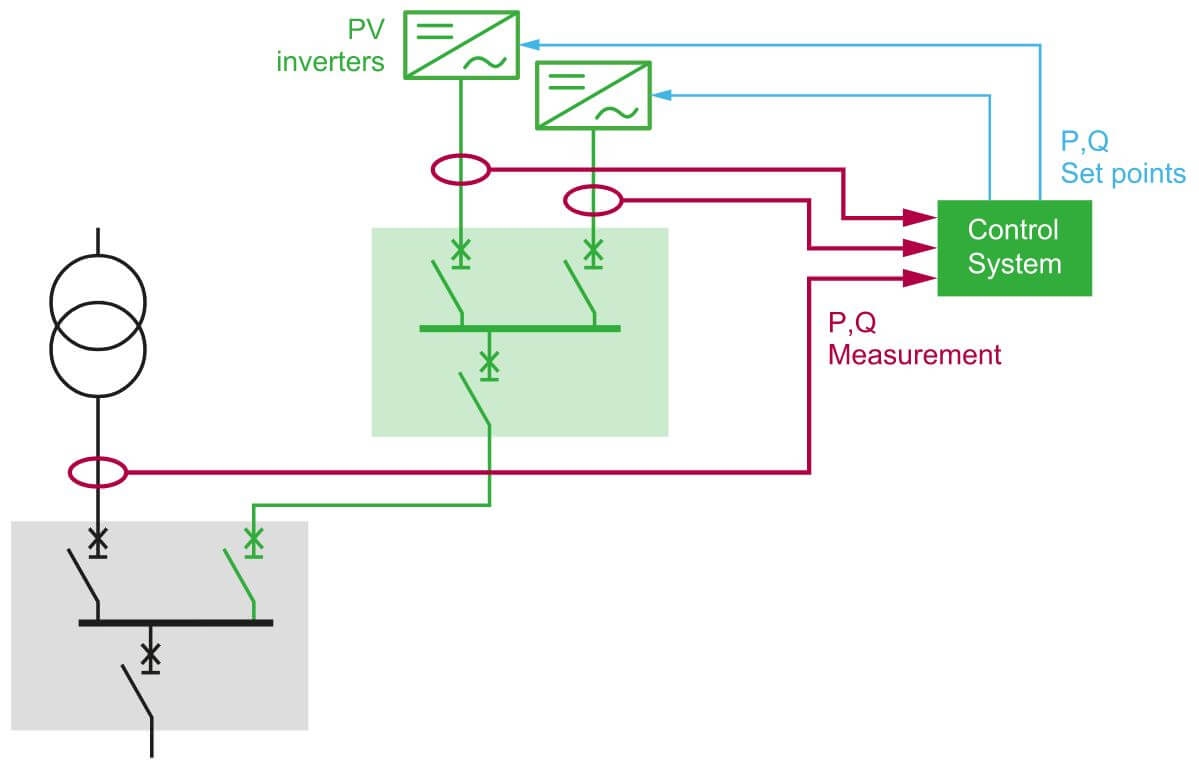
Schneider has a very pertinent assessment of this solution: this method is very suitable for compensating for the power factor drop caused by the photovoltaic system itself, and it is very accurate. However, compensating for the power factor drop due to the load is ineffective for two reasons: first, because solar energy production is only available during the day, and second, because the amount of reactive energy the inverter can provide is limited.
In addition, Schneider’s solution cannot make full use of the owner’s original reactive power compensation system, and cannot solve problems such as the withdrawal of the reactive power compensation system caused by reverse current. Moreover, the reactive power provided by the photovoltaic inverter is premised on reducing a part of the active power, which will affect the value of the active power generated by the inverter.
Growatt
In order to solve the power factor adjustment, Growatt provides a smart energy manager, which is used with CT to provide anti-backflow and reactive power scheduling for the photovoltaic grid-connected system composed of multiple inverters.
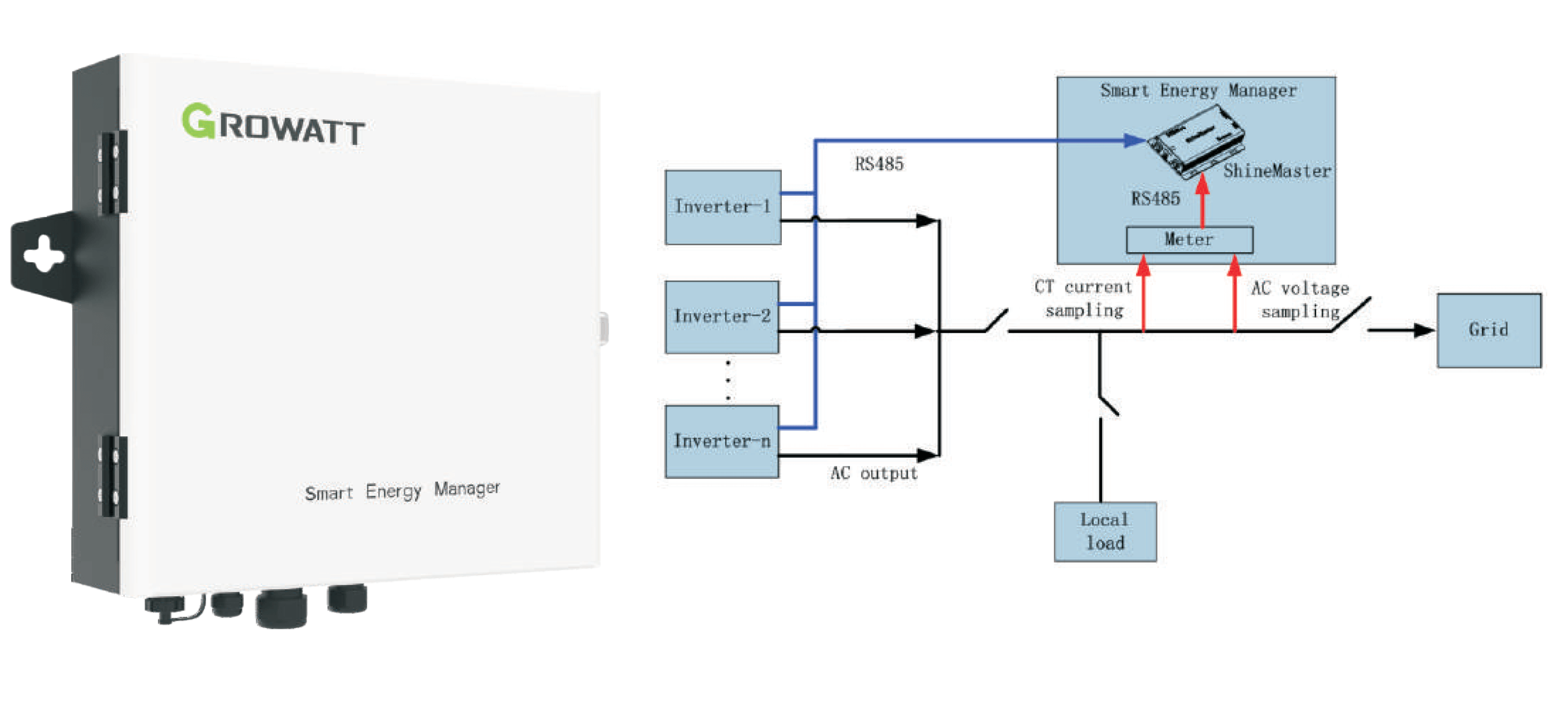
The working principle of Growatt Smart Energy Manager is exactly the same as that of Schneider. Through the collection of voltage and current at the power factor check point, the reactive power compensation power required by the entire electrical system is calculated, and then the command is sent to the inverter to provide suitable reactive power. power to adjust the power factor to the target value.
Huawei
In order to solve the power factor adjustment of distributed photovoltaic systems, Huawei provides Smartlogger3000A. It adds an electric meter to monitor the power factor in real time at the power factor assessment point, and sends instructions to the photovoltaic inverter through calculation, so that the photovoltaic inverter can provide appropriate reactive power, so as to achieve the purpose of power factor adjustment. Its system reactive power response time is <10S.
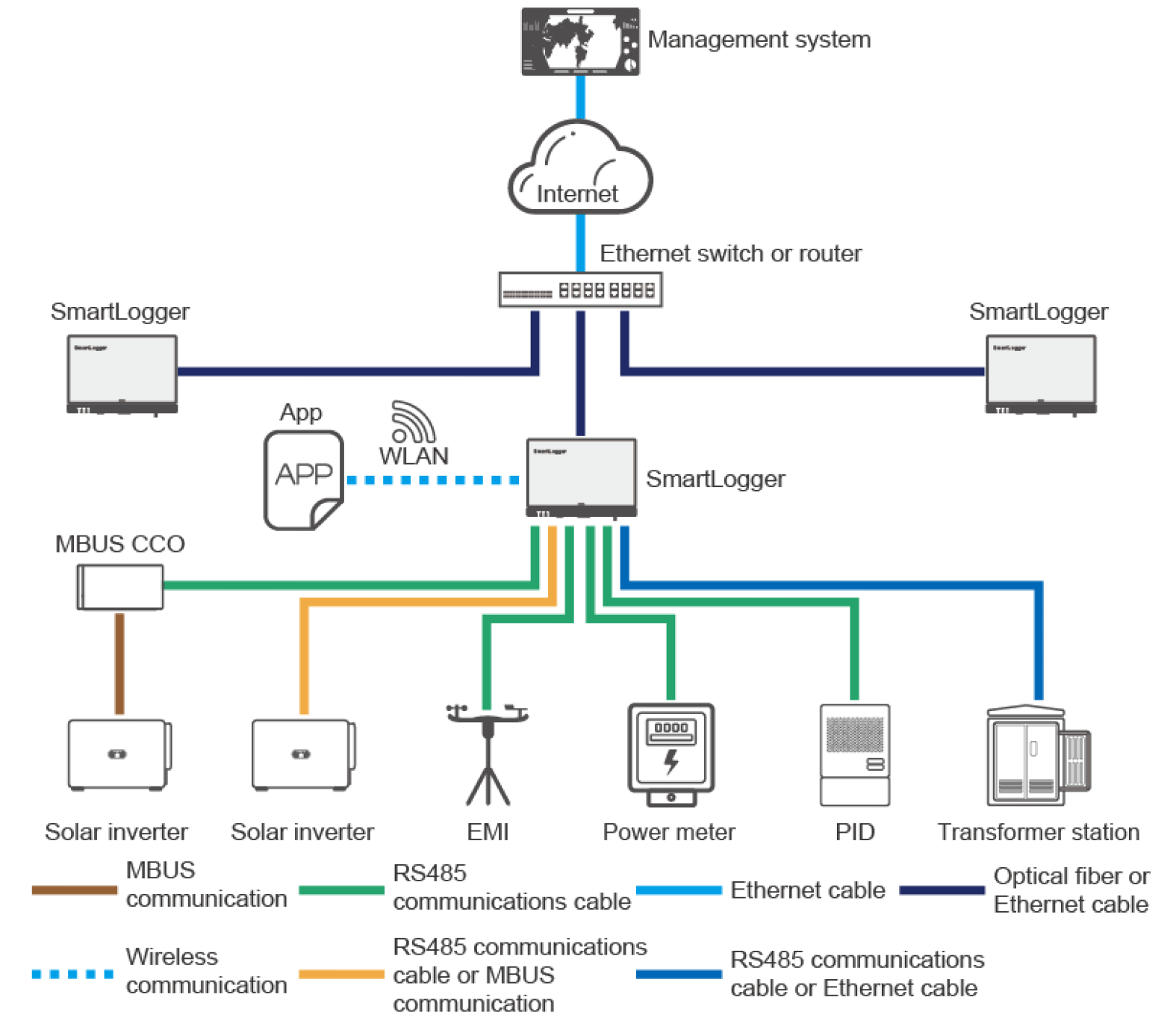
Sungrow
In order to solve the power factor adjustment of distributed photovoltaic systems, Sungrow provides COM100D/COM100E. It adds an electric meter to monitor the power factor in real time at the power factor assessment point, and sends instructions to the photovoltaic inverter through calculation, so that the photovoltaic inverter can provide appropriate reactive power, so as to achieve the purpose of power factor adjustment.
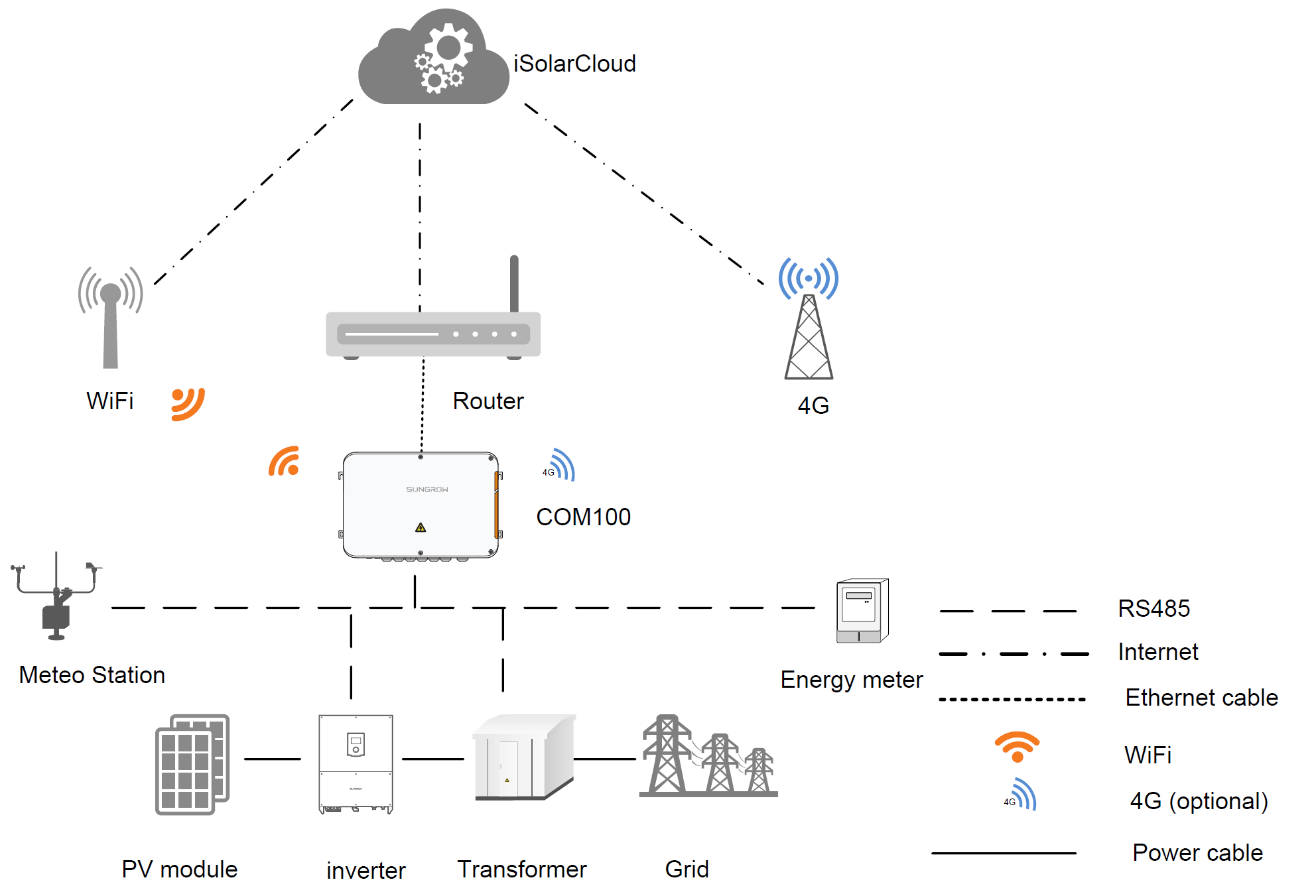
SMA
SMA provided an outdated solution in 2018, that is, to increase the capacity of solar inverters, allowing the inverter to increase the output of reactive power while outputting active power, so as to achieve the purpose of correcting the power factor and avoiding penalties.
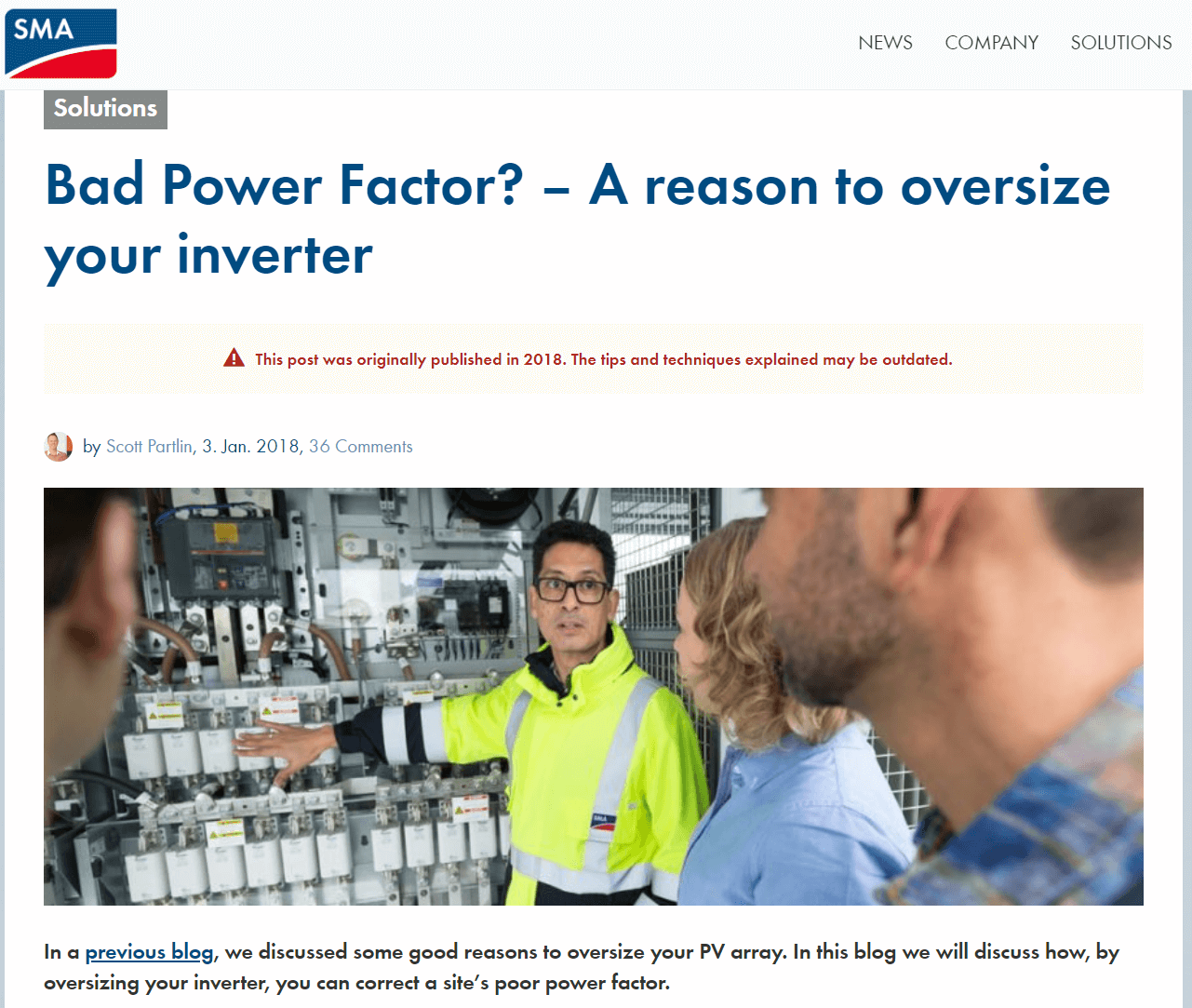
This solution is undoubtedly expensive. Because apparent power S=active power P+jQ reactive power, in order to achieve the purpose of power factor correction, it is only necessary to increase the output of Q, but SMA increases the capacity of the entire S, resulting in the cost of the inverter increasing too much .
Ginlong Solis
For the correction of power factor, Ginlong’s photovoltaic inverter solutions are the most representative solutions. Most photovoltaic inverter manufacturers almost provide solutions in this way: in the setting of photovoltaic inverters, set the power factor, commonly known as “static compensation scheme”.
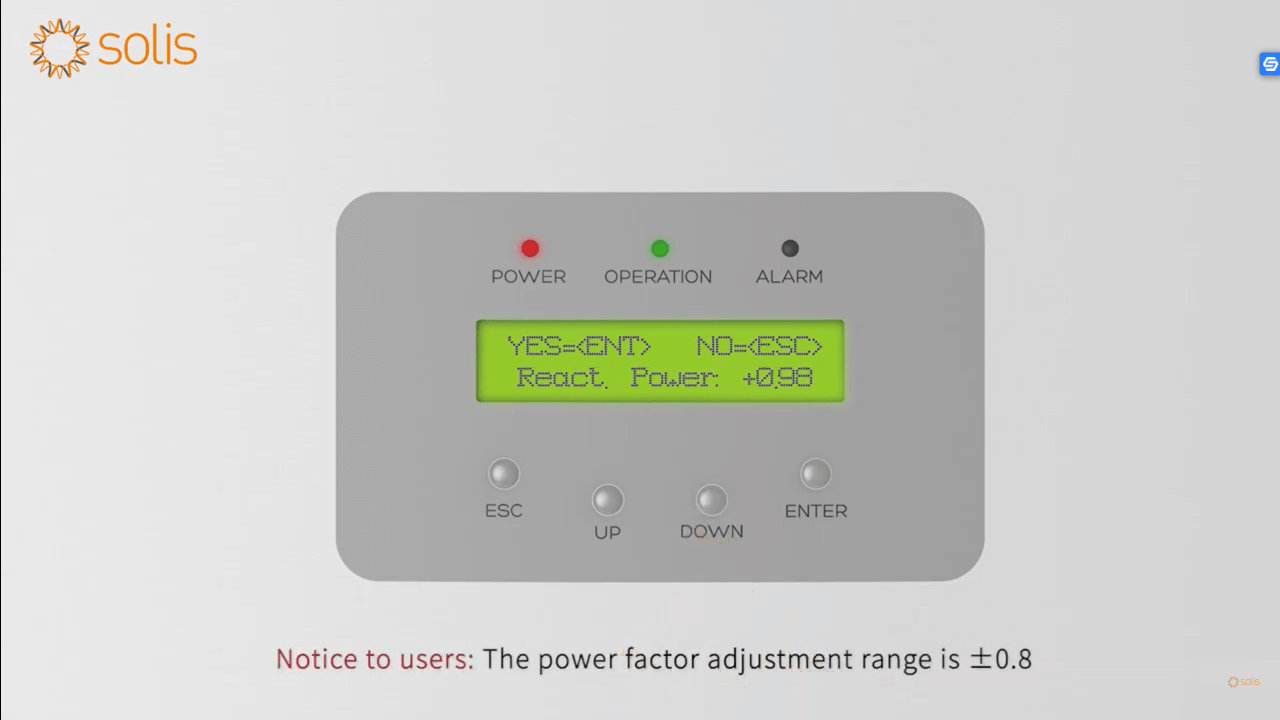
This solution has very limited practical effect in power factor regulation. Because the reactive power compensation capacity required at every moment is dynamic and needs real-time refresh and quick response, this manual setting method cannot meet the requirements of real-time refresh.
Summary of Mainstream PV Inverter Power Factor Compensation Solutions
All PV inverter manufacturers have proposed their own reactive power compensation solutions, indicating that PV inverters need to face the problem of reactive power compensation brought by distributed PV while providing green energy for owners.
Combining the solutions of all mainstream photovoltaic inverter manufacturers, there are mainly the following problems:
- Cannot solve the problems of harmonics, three-phase unbalance and power factor adjustment at the same time
- The reactive power compensation power capacity provided by the photovoltaic inverter is limited and cannot solve the problem of low power factor of the load
- Photovoltaic inverters provide limited reactive power compensation, all need to add various CTs, meters or controllers, requiring additional equipment and installation costs
- The connection of photovoltaic will affect the work of the original reactive power compensation system. All PV inverter solutions ignore its upgrade or control, and cannot make full use of the original reactive power compensation system.
What power quality solutions are needed for distributed photovoltaic systems
Through a large number of distributed photovoltaic field cases and solutions from a large number of photovoltaic inverter manufacturers, it is not difficult for us to figure out what kind of power quality solutions are needed for distributed photovoltaic grid-connected systems:
- It is necessary to comprehensively solve the power quality problems of harmonics, three-phase unbalance and reactive power compensation
- To give full play to the role of the original reactive power compensation system and reduce investment costs
- Maximize the benefit of PV inverter and generate as much active power as possible
- Accurately compensate the power factor, while avoiding being fined, you can also get rewards
- Installation, wiring and commissioning on site as easy as possible
Enjoypowers Power Quality Solutions for Distributed Photovoltaics
In response to the power quality requirements of distributed photovoltaic systems, the solution provided by Enjoypowers is to combine SVG and the original reactive power compensation system into a hybrid var compensation solution, which provides harmonic elimination, three-phase unbalance adjustment and power factor correction for the entire electrical system.
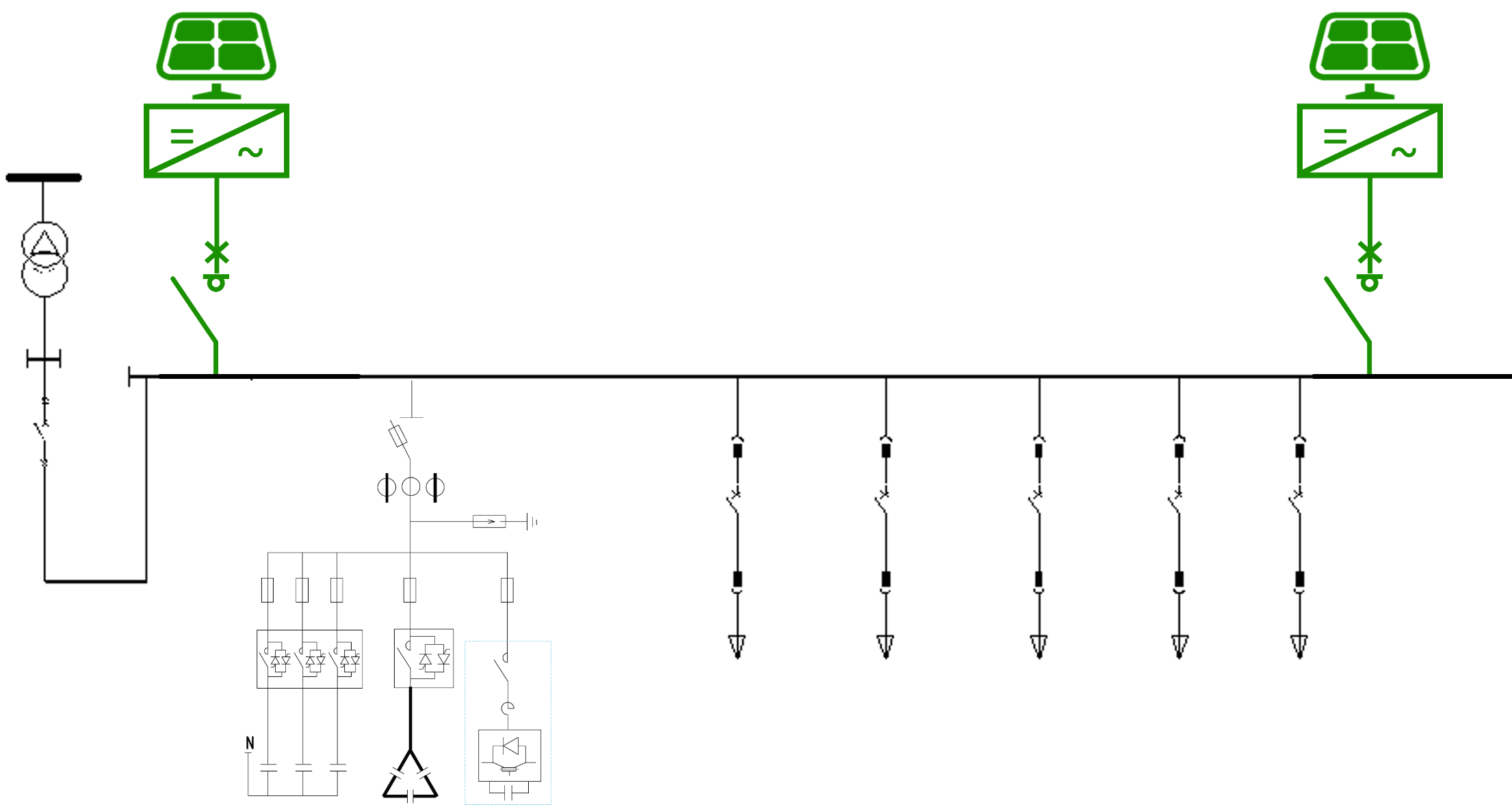
The size of the SVG capacity mainly depends on the load’s capacity requirements for harmonic elimination and reactive power compensation, and the capacity of the original reactive power compensation system.
If the load has harmonic elimination requirements, it is necessary to configure capacitors with harmonic elimination reactors to avoid resonance.
The setting of the hybrid var compensation scheme, the most important thing is to set the target power factor to 1, so that S” is as close to P’ as possible.
The hybrid var compensation solution provided by Enjoypowers has the following characteristics:
- One-stop solution to power quality problems of harmonics, three-phase unbalance, and power factor correction
- Regardless of whether the PV system access point is at the front end or the back end of the reactive power compensation system, SVG can make full use of the original reactive power compensation system and correct the power factor to 1 as much as possible.
- SVG can provide relay switch or RS485 interface to directly control capacitor to achieve precise compensation and fast response
Introduction of Enjoypowers company and products and solutions
About Enjoypowers
Shenzhen Enjoypowers Co., Ltd., mastering the core technology of power electronics, is a supplier of core devices and solutions in the power transmission and distribution system. It has reached the international leading level in the fields of power quality, high-efficiency energy storage and customized power supply, and its products are used in all the country. Provinces, municipalities and autonomous regions, Hong Kong, Macao and Taiwan, and exported to dozens of countries and regions such as the United States, South Korea, Japan, Singapore, etc., and widely served in the power, communication, transportation, petroleum chemical, new energy and other industries.
Enjoypowers has passed the ISO9001 international quality system certification, ISO14001 environmental management system certification, ISO45001 occupational health and safety management system certification, and has successively won the national high-tech enterprise, Guangdong Province “specialized and special new” enterprise, Shenzhen Top Ten Innovation and Entrepreneurship Benchmarking Enterprise Award, Honorary titles such as China’s Top Ten Power Quality Innovative Brands and the Best PCS Supplier Award in China’s Energy Storage Industry of the Year.
Introduction of Enjoypowers’ SVG
The static var generator SVG provided by Enjoypowers adopts a three-level topology inverter structure, which can solve power quality problems such as harmonic elimination, three-phase balance and power factor correction in one stop.
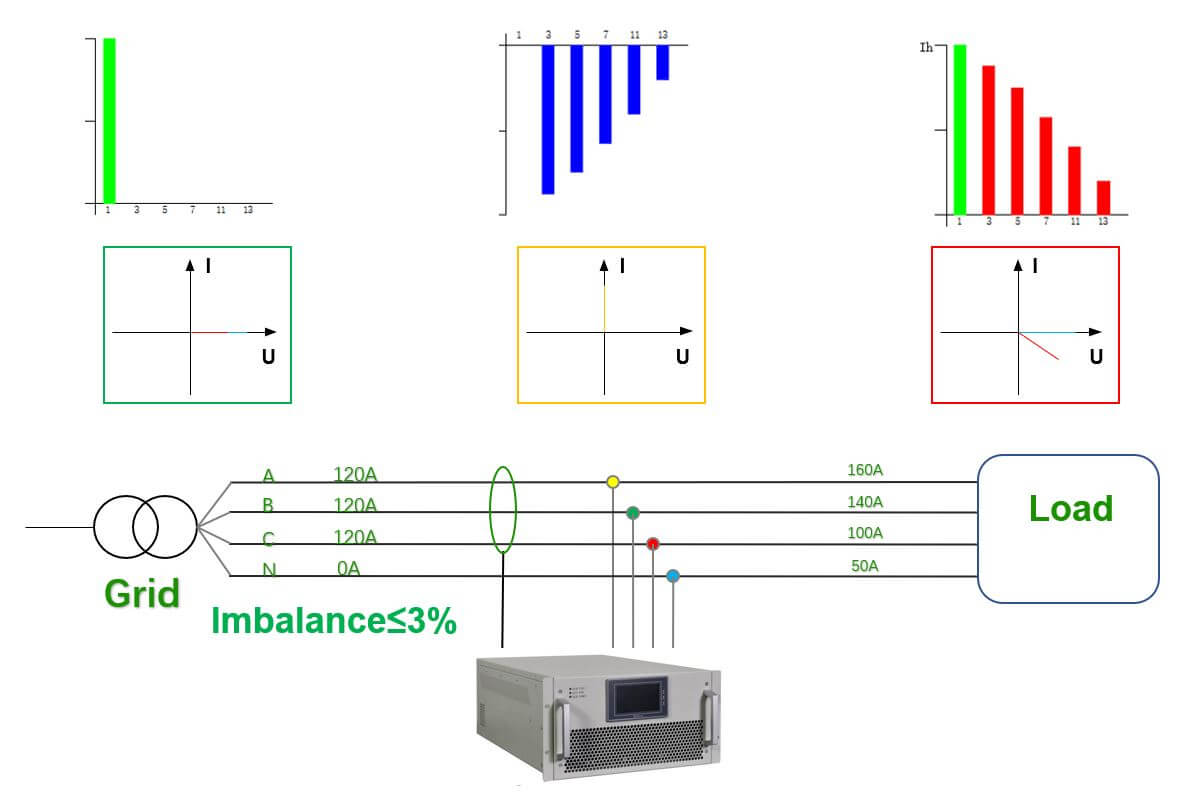
Depending on the installation location, Enjoypowers can provide different types of products such as industrial type, commercial type and mini-civilian type. The capacity of a single device can be from 20kVar to 150kVar, and ≥20 modules can be connected in parallel.
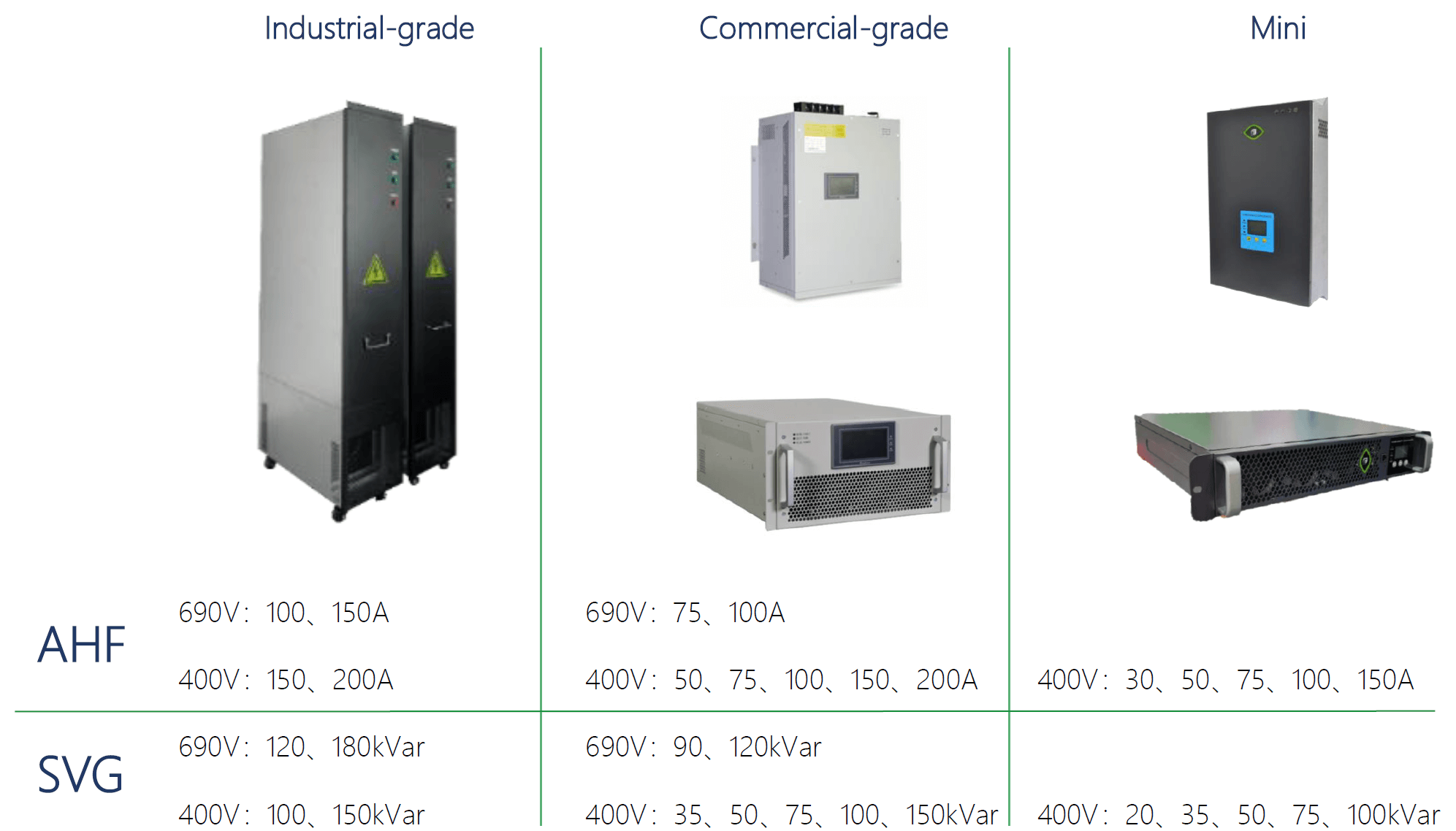
Introduction of Enjoypowers Hybrid Var Compensation Solution HVC
Enjoypowers’ hybrid var compensation solution HVC is a cost-effective compensation solution, which can not only meet the demand for reactive power compensation, but also greatly reduce equipment costs. All power quality products launched by Enjoypowers are suitable for hybrid var compensation schemes, which can provide various compensation methods such as star, delta-compensation and hybrid var compensation, and have the advantages of fast response, accurate compensation, flexible configuration, safety and reliability.
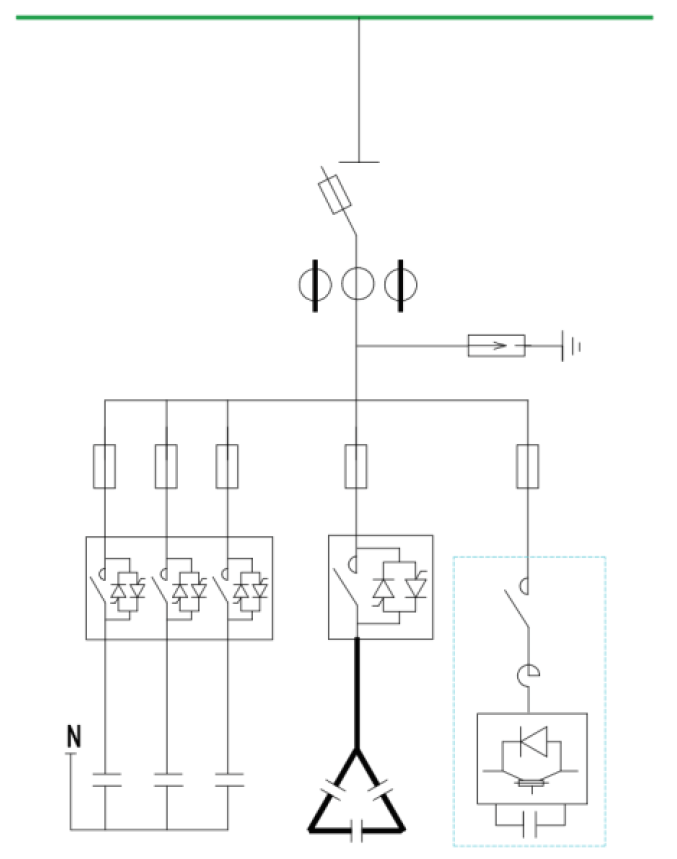
In the hybrid var compensation solution of Enjoypowers, SVG can control the capacitor through RS485 or DO signal, which can achieve fast response, the fast response time is 33μs, and the full response time is less than 5ms. SVG supports the cyclic switching of capacitors and prolongs the service life of capacitors.

Figure 16 Schematic diagram of the Enjoypowers hybrid var compensation solutionThe hybrid var compensation of Enjoypowers can completely avoid the problem of over-compensation or under-compensation, and provide accurate compensation for the system.
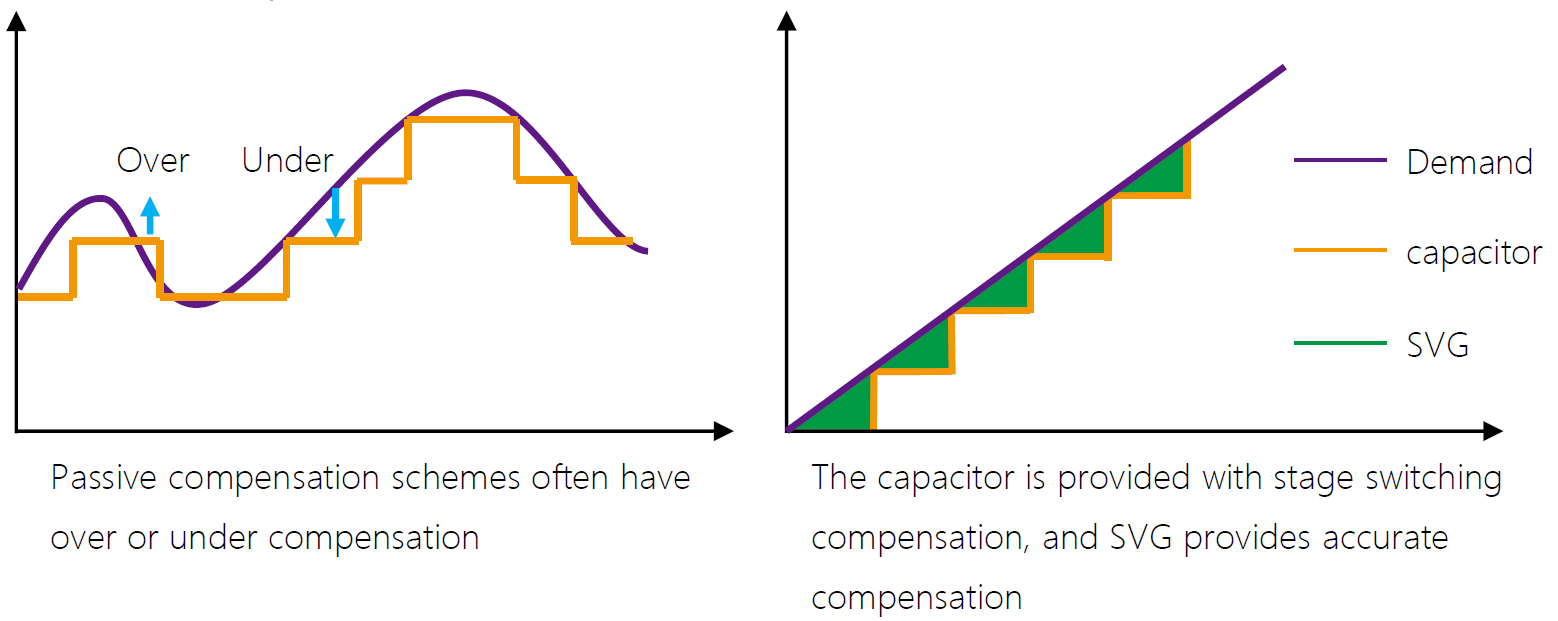
In the Enjoypowers hybrid var compensation scheme, SVG and capacitors can provide flexible configurations to provide capacitive or inductive reactive power compensation for electrical systems.
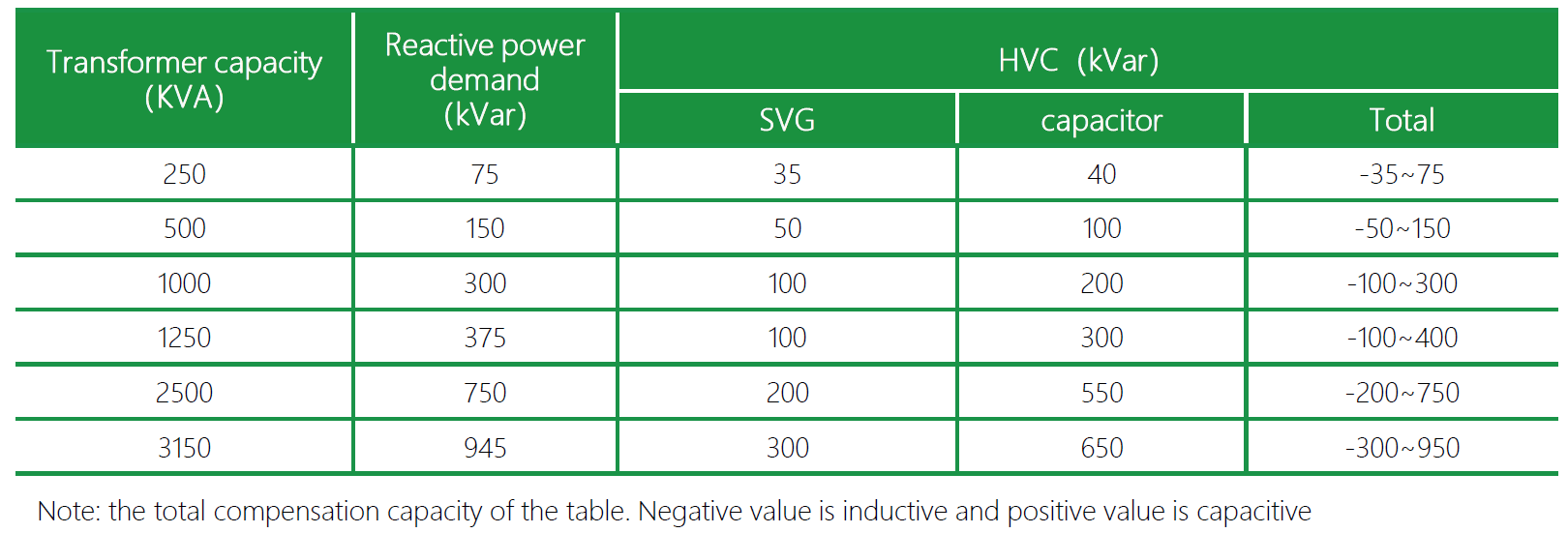
Application of Enjoypowers Hybrid var compensation in Distributed Photovoltaic
Project Background
A metal processing plant has a 1000kVA transformer, 30% of the load is high-frequency heating equipment, the active power of the electrical load is 500-600kW, there is a 300kvar reactive power compensation cabinet, the monthly average power factor is above 0.9, and the system is running normally.
After installing photovoltaics, the power factor dropped to 0.8, the fuse in the reactive power compensation cabinet was often blown, the capacitor was often damaged, and the main circuit breaker was often tripped.
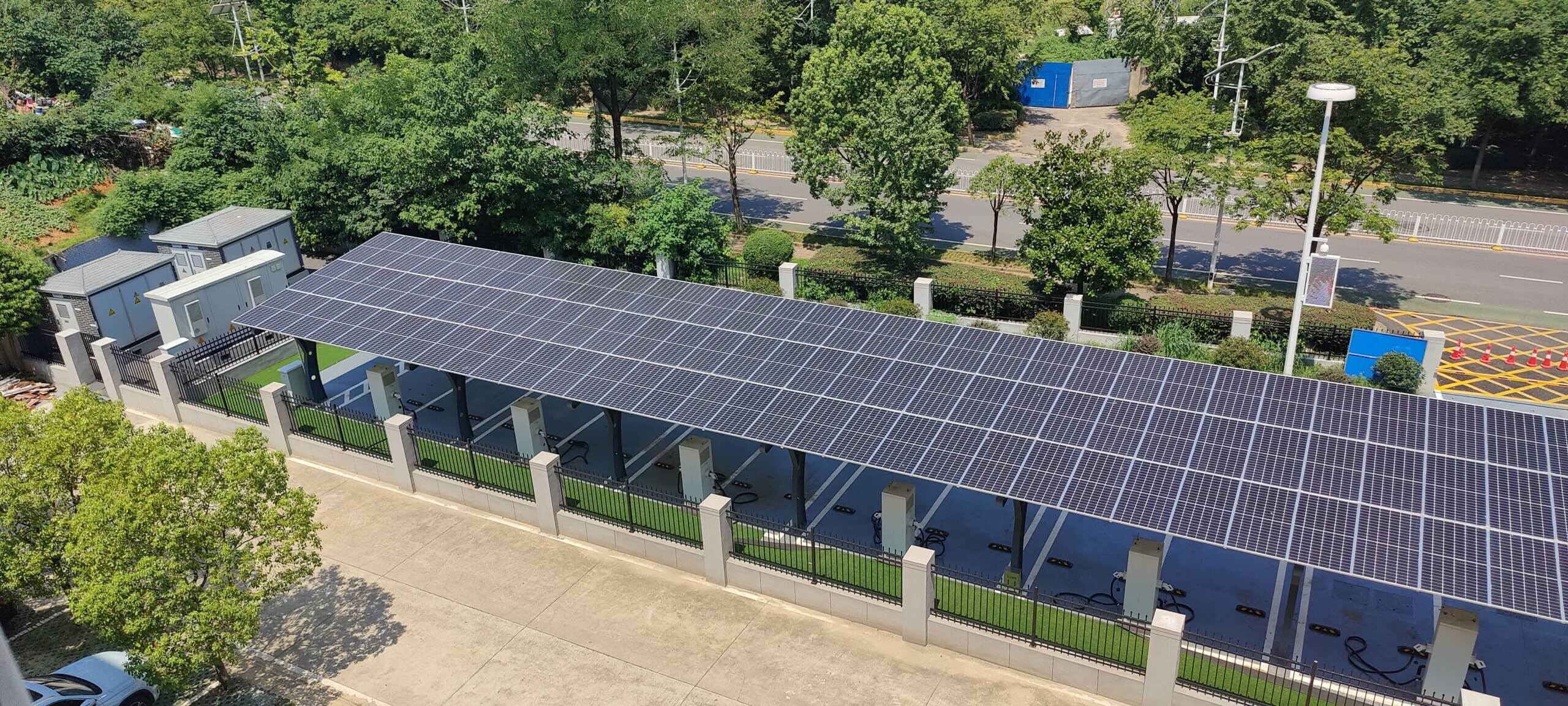
Project Problem Analysis
Enjoypowers sent engineers to the site to investigate and found that the reactive power compensation cabinet is purely capacitive compensation, the rated current of the capacitor is 43A, and the actual operating current reaches 86A. After the photovoltaic system is connected, resonance occurs with the high-frequency heating equipment system, the 11th and 13th harmonics are seriously amplified, the THDi rises from the original 18% to 43%, and the harmonic voltage is as high as 15%. After a few minutes of operation, the main short circuit switch has a high temperature alarm.
Solutions provided by Enjoypowers and the effects after implementation
Harmonic elimination and power factor correction solutions from Enjoypowers:
- Add 200kVar SVG and use capacitors with harmonic elimination reactors to form a set of hybrid var compensation solution with a capacity of 530kVar;
- Install a 200A active harmonic filter in front of the high-frequency heating equipment.
After the implementation of the plan, the monthly average power factor reached above 0.95, and there was no phenomenon of switch tripping, which ensured the normal production of customers.
Download this PDF version file: Photovoltaics’ Power Quality Problems And Best Solutions From Enjoypowers 2022
Author: [email protected]
